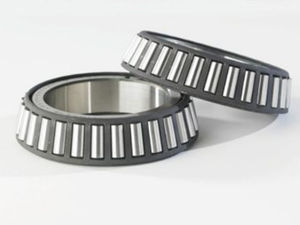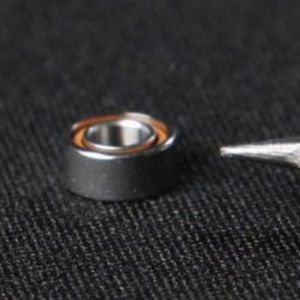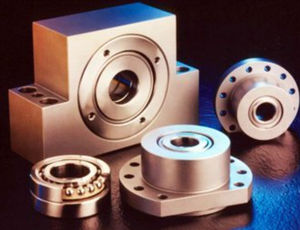
Ball bearing bearing H seriesradialdeep grooveangular-contact

Add to favorites
Compare this product
Characteristics
- Rolling element
- ball bearing
- Configuration
- radial, deep groove, angular-contact, single-row
- Material
- steel
- Other characteristics
- high-speed, high-performance, long-life, for heavy loads
- Applications
- for the aeronautical industry, transmission
- Inside diameter
Max.: 630 mm
(24.8 in)Min.: 2.5 mm
(0.1 in)- Outside diameter
Max.: 600 mm
(23.62 in)Min.: 10 mm
(0.39 in)- Width
Max.: 0.75 mm
(0.03 in)Min.: 0.12 mm
(0.005 in)
Description
Timken’s ball bearings for aerospace applications are specifically designed to withstand radial, thrust, moment, reversible thrust or combination loads. Our offering includes two Conrad configurations (types HK and HD) and two angular contact configurations (types HA and HT). Bearings may be supplied as single units or in preloaded sets.
Design Attributes:
HK series is designed to handle heavy loads and has high-strength Conrad separator options that can manage severe loads and speeds.
HD series features an innovative fractured outer ring design that allows for maximum ball complement in a radial deep-groove bearing. This provides significant improvements in dynamic load capacity and predicted service life.
HA series has a non-separable design with counter-bored outer rings and one-piece, high strength separators. Ideal for preloaded and/or thrust-type applications.
Options include deep-groove outer and relieved inner races for ultra-high-speed applications.
HT series is a high-performance line featuring full deep-groove outer rings, one-piece, high strength separators and two extra-deep-groove inner ring halves. Ideal for use on high-speed shafts with reversing thrust loads.
Catalogs
No catalogs are available for this product.
See all of TIMKEN‘s catalogsRelated Searches
- TIMKEN bearing
- TIMKEN steel bearing
- TIMKEN ball bearing bearing
- TIMKEN roller bearing
- TIMKEN radial bearing
- Plain bearing
- TIMKEN single-row bearing
- TIMKEN axial bearing
- Bearing unit
- Metal plain bearing
- Deep groove ball bearing
- Double-row bearing
- TIMKEN precision bearing
- TIMKEN cylindrical roller bearing
- TIMKEN bearing with cage
- Polymer plain bearing
- TIMKEN tapered roller bearing
- Metal bearing unit
- Cylindrical plain bearing
- Angular-contact bearing
*Prices are pre-tax. They exclude delivery charges and customs duties and do not include additional charges for installation or activation options. Prices are indicative only and may vary by country, with changes to the cost of raw materials and exchange rates.






